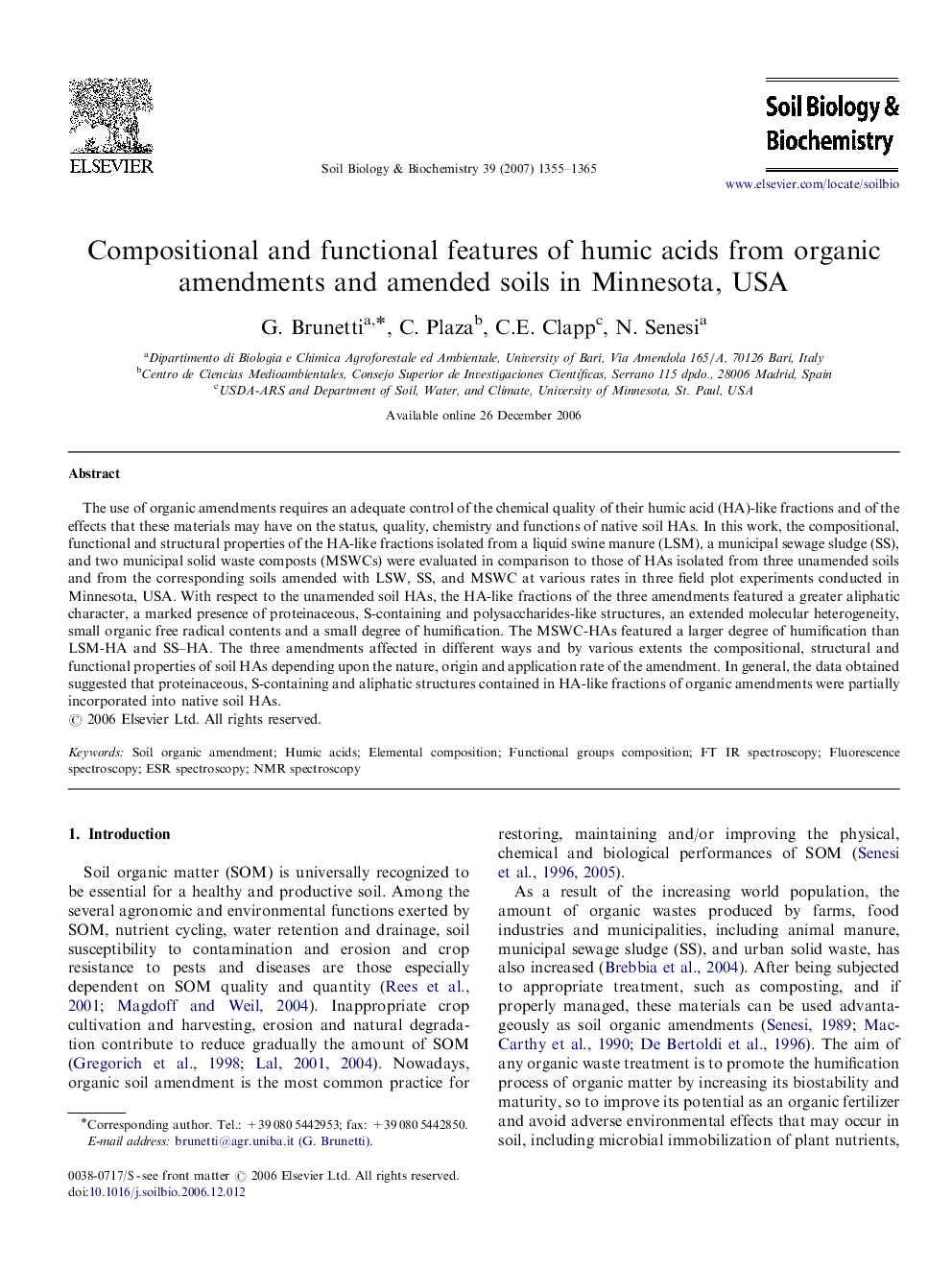| Article ID | Journal | Published Year | Pages | File Type |
|---|---|---|---|---|
| 2027066 | Soil Biology and Biochemistry | 2007 | 11 Pages |
The use of organic amendments requires an adequate control of the chemical quality of their humic acid (HA)-like fractions and of the effects that these materials may have on the status, quality, chemistry and functions of native soil HAs. In this work, the compositional, functional and structural properties of the HA-like fractions isolated from a liquid swine manure (LSM), a municipal sewage sludge (SS), and two municipal solid waste composts (MSWCs) were evaluated in comparison to those of HAs isolated from three unamended soils and from the corresponding soils amended with LSW, SS, and MSWC at various rates in three field plot experiments conducted in Minnesota, USA. With respect to the unamended soil HAs, the HA-like fractions of the three amendments featured a greater aliphatic character, a marked presence of proteinaceous, S-containing and polysaccharides-like structures, an extended molecular heterogeneity, small organic free radical contents and a small degree of humification. The MSWC-HAs featured a larger degree of humification than LSM-HA and SS–HA. The three amendments affected in different ways and by various extents the compositional, structural and functional properties of soil HAs depending upon the nature, origin and application rate of the amendment. In general, the data obtained suggested that proteinaceous, S-containing and aliphatic structures contained in HA-like fractions of organic amendments were partially incorporated into native soil HAs.
